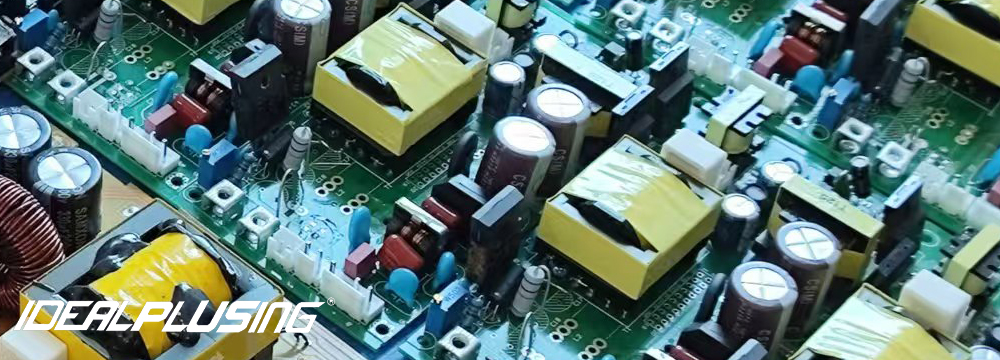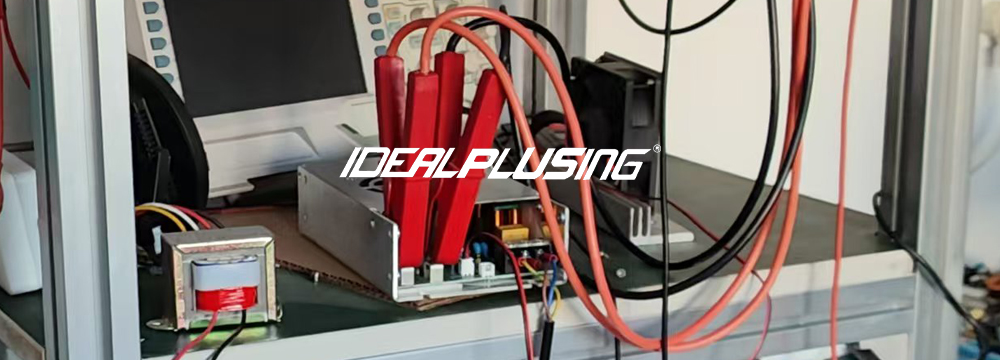The output voltage of the switching power supply will decrease when the load is short-circuited. Similarly, the output voltage will increase when the load is open or unloaded.

What can be used as a fake load?
During maintenance, the dummy load replacement method is generally used to distinguish whether the power supply part is faulty or the load circuit is faulty. Regarding the selection of dummy loads, 40W or 60W bulbs are generally selected as dummy loads (large-screen color TVs can use bulbs above 100W as dummy loads).
The advantage is that it is intuitive and convenient. According to whether the bulb is lit and the brightness of the light, it can be known whether the power supply has voltage output and the level of the output voltage.
However, the disadvantages are also obvious. For example, the hot resistance of a 60W bulb is 500Ω, while the cold resistance is only about 50Ω.
For example: Assuming that the main voltage output of the power supply is 100V, when a 60W bulb is used as a dummy load, the current of the power supply when working is 200mA, but the main load current at startup reaches 2A, which is 10 times the normal working current.
Therefore, using a bulb as a dummy load can easily make the power supply difficult to start. Since the greater the power of the bulb, the smaller the cold resistance, the starting current of a high-power bulb is greater, and the power supply is more difficult to start.
When calculating the starting current and working current of the power supply, the formula I=U/R can be used to calculate: the load current when the power supply starts is 100V/50Ω=2A, and the load current when the power supply is working is 100V/500Ω=0.2A.
However, it should be noted that the above is a theoretical calculation and may be different in practice. In order to reduce the starting current, a 50W soldering iron can be used as a dummy load (the cold and hot resistance values are both 900Ω) or a 50W/300Ω resistor, which is more accurate than using a 60W bulb.
In what situations can you not connect a dummy load?
Some power supplies can be directly connected to a dummy load, while some cannot. Specific problems need to be analyzed specifically. The following is a detailed explanation of 3 types of situations:
The first type is a separately excited switching power supply. For a separately excited power supply without line pulse synchronization, the line load can be disconnected and the dummy load can be directly connected.
For a separately excited switching power supply with line pulse frequency locking and indirect sampling, when directly connected to a dummy load (especially when connected to a high-power bulb such as 150W), the output voltage may drop a lot or there may be no output, because for this type of power supply, although the addition of the line pulse only plays the role of synchronization and frequency locking, it does not participate in oscillation.
However, the line synchronization pulse can advance the conduction time of the switch tube, and the power supply has the strongest load carrying capacity at this time. If the line load is disconnected, the line synchronization pulse will lose its function, and the power supply's load carrying capacity will inevitably decrease.
In addition, the voltage stabilization sensitivity of the power supply with indirect sampling is low, and the output voltage will inevitably decrease.
However, if the voltage stabilization circuit of this type of power supply adopts direct sampling (the sampling voltage is taken from the secondary of the switching transformer), due to the high voltage stabilization sensitivity, the line load can be disconnected and the dummy load can be directly connected, or even no-load maintenance can be performed.
The second type is a switching power supply with line pulse synchronization, which can disconnect the line load and directly connect the dummy load. This type of switching power supply is purely self-excited.
The purpose of introducing a positive line reverse pulse at the base of the switch tube is to synchronize the self-excited oscillation of the switch tube with the line pulse, and to limit the interference of the pulse radiation of the switching power supply to the oblique stripes of the screen to the line scanning reverse process, so that no interference can be seen on the screen.
The line pulse added to the base of the switch tube only makes the switch tube turn on early during the cut-off period, and basically does not constitute an auxiliary excitation function. Therefore, it is called a Switched-mode power supply with line pulse synchronization.
The method to determine whether it belongs to this type of power supply is that when the line reverse pulse is disconnected, the switching power supply only makes a sound (because the oscillation frequency becomes lower), and the output voltage does not drop.
Therefore, this power supply can disconnect the line scanning circuit and use the dummy load method for maintenance.
The third type is a switching power supply with line pulse auxiliary excitation. The line reverse pulse of this switching power supply not only completes the synchronization of the self-excited oscillation frequency of the switching power supply, but also constitutes an indispensable part of the feedback network of the switching tube.

The working process of this Switched-mode power supply is: after starting up, the switch tube generates self-excited oscillation. Under rated load, its feedback network can only make the output end generate a voltage 40% lower than the normal output.
This voltage starts the line scan, and the line pulse is fed back to the switch tube for auxiliary excitation to achieve the rated voltage output. There are two purposes for this:
First, there is a voltage reduction protection function. Once the line scan circuit fails, whether it is open or short-circuited, the output voltage of the switching power supply is reduced to 60% of the original value, which reduces the damage range.
Second, both the power supply and the line scan have a very short soft start process to reduce the failure rate of the power supply and line scan.
For this type of power supply, if the feedback line pulse circuit is removed, the output voltage of the power supply will drop by 40% to 60%, or even very low. Obviously, this power supply cannot be directly disconnected from the line scan and repaired by the dummy load method, because even if the power supply circuit is normal at this time, it is impossible to output the rated voltage.
The method to distinguish the power supply and line scan circuit failure is to use an external power supply to power the line scan circuit separately. If the line scan circuit works normally, it means that the switching power supply is bad.






